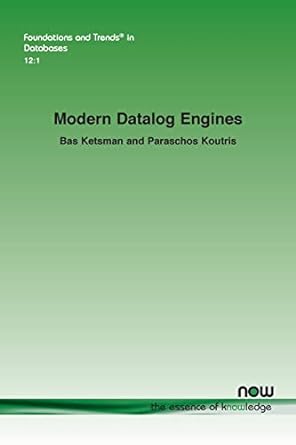Question
DO IN MATLAB Create an auditory discrimination task where the user discriminates between tones of different frequencies. You can read in Ch. 5 about the
DO IN MATLAB
Create an auditory discrimination task where the user discriminates between tones of different frequencies. You can read in Ch. 5 about the sound functions offered by Matlab. The signal consists of four tones randomly sampled from a normal distribution with a mean of 1100 Hz and a standard deviation of 100 Hz. The standard (also called noise trials) consists of four tones randomly sampled from a normal distribution with a mean of 1000 Hz and a standard deviation of 10 Hz. Listeners are presented four 50-ms tones separated by 50-ms silent gaps and are asked to decide whether the tones were sampled from the signal distribution or from the standard distribution
REQUIREMENTS
The program should first ask for the id of the user.
The program should ask for the number of trials n in the discrimination task. The number n should be an even number.
The program should randomly allocate n/2 signal events and n/2 noise events to the n trials
The randomization should be the same for each user id. In other words, if we restart the program with the same user id, we should get the same sequence of trials (i.e., make sure you are setting the random seed)
On each trial, a signal or noise event should be presented (sound or image) and the user has to respond with a signal or noise decision using letters or numbers as responses. You do not have to implement a graphical user interface for the task. Simply use the command window to present feedback and receive user input from the keyboard.
The user should receive feedback after each trial (correct or incorrect)
After n trials are completed, calculate the following
1. The probability of a hit (i.e. probability that a user reports a signal when the stimulus was sampled from the signal distribution)
2. The probability of a false alarm (i.e., probability that a user reports a signal when the stimulus was sampled from the noise/standard distribution).
3. Sensitivity (d) and the bias (beta) index from Signal Detection Theory as described on p. 183 (Ch. 7). There is a problem calculating d when the observed hit or false alarm rates equal 0 or 1. There are several elegant solutions to this problem (including Bayesian analysis) but we will not pursue those here. One ad-hoc solution you can use is to replace the empirical hit or false alarm rates of 0 or 1 with fixed values of 0.01 and .99 respectively.
Show these performance numbers to the user
The data should be saved to a .mat Matlab file. The filename should be constructed in such a way that it is unique. The filename should have the user id in the file. Optionally, you can also put some timestamp in the name. You should save all the data that is need to reconstruct what happened in the discrimination task including all individual decisions. Also save the signal detection indices calculated at the end of the task.
Step by Step Solution
There are 3 Steps involved in it
Step: 1

Get Instant Access to Expert-Tailored Solutions
See step-by-step solutions with expert insights and AI powered tools for academic success
Step: 2

Step: 3

Ace Your Homework with AI
Get the answers you need in no time with our AI-driven, step-by-step assistance
Get Started


